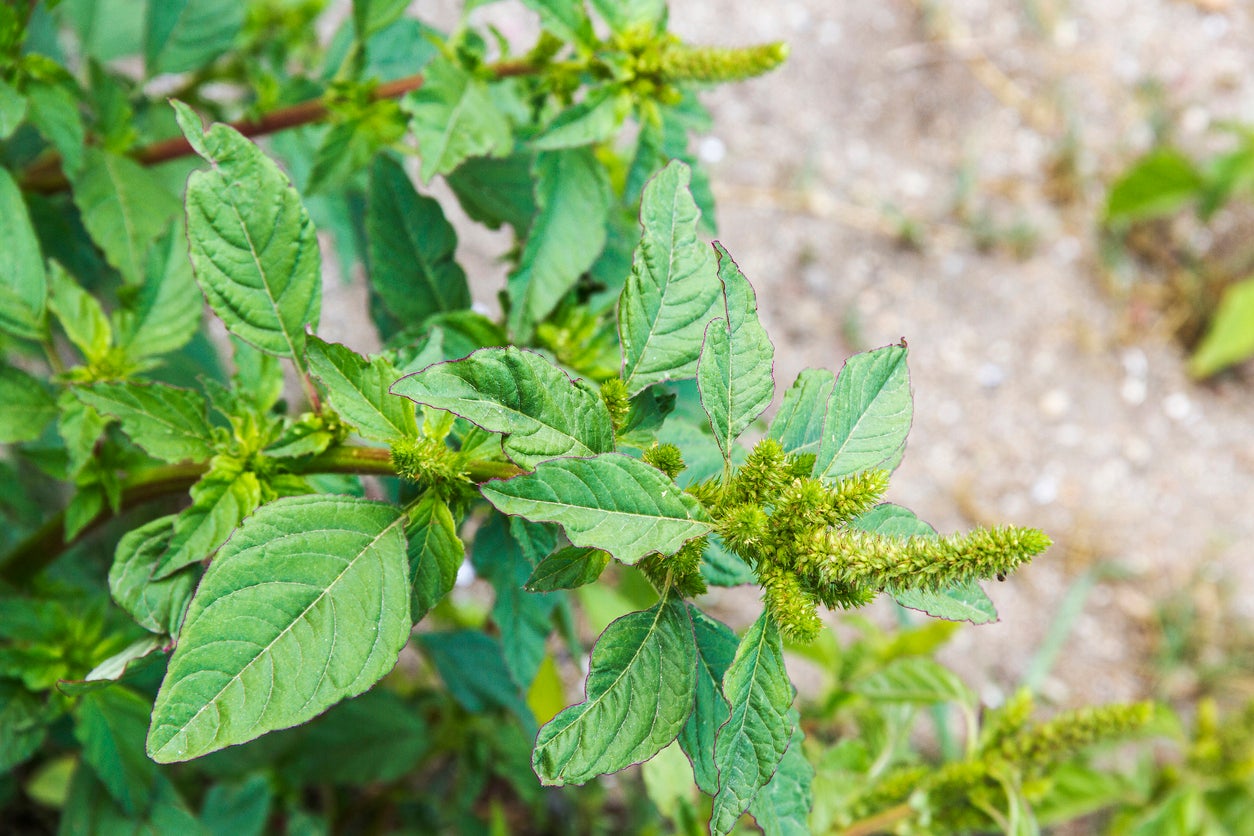What Is Pigweed – Learn About Pigweed Plant Uses


Using pigweed plants in the kitchen is one way to manage this plant that many gardeners call a pest or weed. Common throughout the U.S., pigweed is edible from its leaves and stems down to its small seeds.
What is Pigweed?
Pigweed (Amaranthus retroflexus) is one of the most common weeds seen in pastures in the U.S., but you are also likely to see it in your garden. Like other weeds, it is tough, growing in a variety of conditions and resisting many herbicides.
There are actually many types of plant called pigweed, a vast family also known as amaranth. The family probably originated in the Americas but now grows throughout the world. It includes cultivated cereals as well as several plants considered to be weeds.
The pigweeds you are likely to encounter in U.S. gardens all look similar and may grow in height between just 4 inches (10 cm.) to over 6 feet (2 m.). The leaves are simple and oval-shaped, often with some red coloration. The stems are sturdy and the flowers are unremarkable.
Is Pigweed Edible?
Yes, the weeds in the garden we call pigweed, including prostrate pigweed, from the amaranth family, are edible. Every part of the plant can be eaten, but the young leaves and growing tips on older plants are the tastiest and most tender. The seeds are nutritious, edible, and are not difficult to harvest.
So, how can you eat pigweed? Use it in most of the ways you would any other edible green. For raw eating, stick with the young leaves and new shoots. These can be used like salad greens or spinach. The young and older leaves can also be sautéed or steamed, used as you would chard or turnip greens. The leaves contain vitamins A and C, iron, and calcium.
Pigweed plant uses include harvesting and eating the seeds, raw or cooked. The seeds are particularly nutritious and are high in protein, fiber, and vitamins A and C. You can eat the seeds raw, roasted, cooked as a hot cereal, and even popped like popcorn.
Gardening tips, videos, info and more delivered right to your inbox!
Sign up for the Gardening Know How newsletter today and receive a free copy of our e-book "How to Grow Delicious Tomatoes".
If enjoying pigweed from your garden, be sure that you have not sprayed pesticides or herbicides on it before harvesting. Also, be aware that some varieties, like Amaranthus spinosus, have sharp spines that will need to be avoided or removed.
Disclaimer: The contents of this article are for educational and gardening purposes only. Before using or ingesting ANY herb or plant for medicinal purposes or otherwise, please consult a physician, medical herbalist, or other suitable professional for advice.

Mary Ellen Ellis has been gardening for over 20 years. With degrees in Chemistry and Biology, Mary Ellen's specialties are flowers, native plants, and herbs.
-
 Looking For Plants To Give You The Soft And Fuzzies? Try These 5 Fuzzy Leaf Plant Options
Looking For Plants To Give You The Soft And Fuzzies? Try These 5 Fuzzy Leaf Plant OptionsLovers of texture, drama, silver foliage and tactile plants will adore these special sensory garden additions. These fuzzy leaf plant options will leave you all aglow
By Susan Albert
-
 Get Ready For A Summer Of Hummers! Grow These Full Sun Hummingbird Plants and Flowers
Get Ready For A Summer Of Hummers! Grow These Full Sun Hummingbird Plants and FlowersIf you’re lucky enough to enjoy a sunny backyard, make sure you are maxing out on your pollinator opportunities and grow these full sun hummingbird plants and flowers
By Tonya Barnett